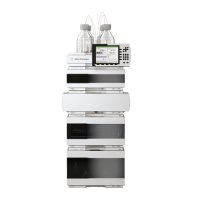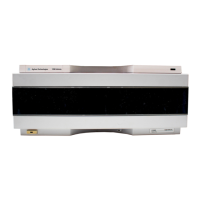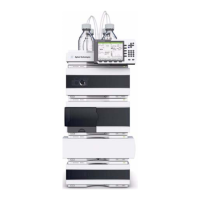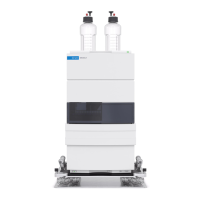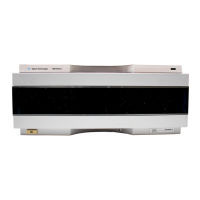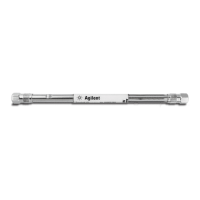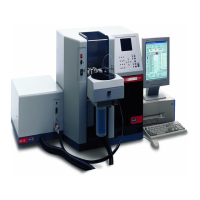78 1290 Infinity Quaternary Pump User Manual
4 Using the Pump
Solvent Information
Handling of Acetonitrile
Acetonitrile is a solvent that is frequently used in reversed- phase
chromatography. Despite of its common use, it can be a source of issues if
not handled correctly. Acetonitrile degrades through polymerization and
such polymers can stick to surfaces in LC systems and e.g. cause issues
with valve performance and therefore affect retention time precision.
Polymers can also show up as background noise in MS detectors.
When using acetonitrile:
• Use high- quality solvents from renowned suppliers.
• Use fresh solvents and filter them.
• Minimize exposure to light and air/oxygen.
• Choose a bottle size which fits to your application and usage.
• Acids accelerate polymerization. If possible avoid such additives or
refresh solvents more frequently.
• Pure acetonitrile polymerizes faster. If your application allows, add
about 5 % water and adjust gradient compositions.
• Do not leave acetonitrile in unused systems to avoid aging. If not in
use, flush all solvent lines with a mixture of water and 10 %
isopropanol.
• In case of blocked valves, flush the system with hot water. Knock at
valves, flush them (see “Releasing a Stuck Inlet Valve” on page 149) or
ultrasonicate them, e.g. in methanol.
Handling of Acids
Acids can corrode stainless steel and other materials in the flow path of
LC systems. For stainless steel, the minimum pH is 2.3 for corrosive acids
and pH 1 for non- corrosive acids.
Please note that for non- volatile acids like phosphoric acid or perchloric
acid concentrations increase after evaporation of water. This means that
originally diluted acids can damage parts over time, e.g. because of liquid,
which has left the solvent path through micro leaks. Such systems should
be flushed regularly with pure water and may require shorter
maintenance cycles. Using a seal wash option should be considered for
protecting pump heads.
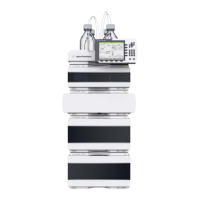
